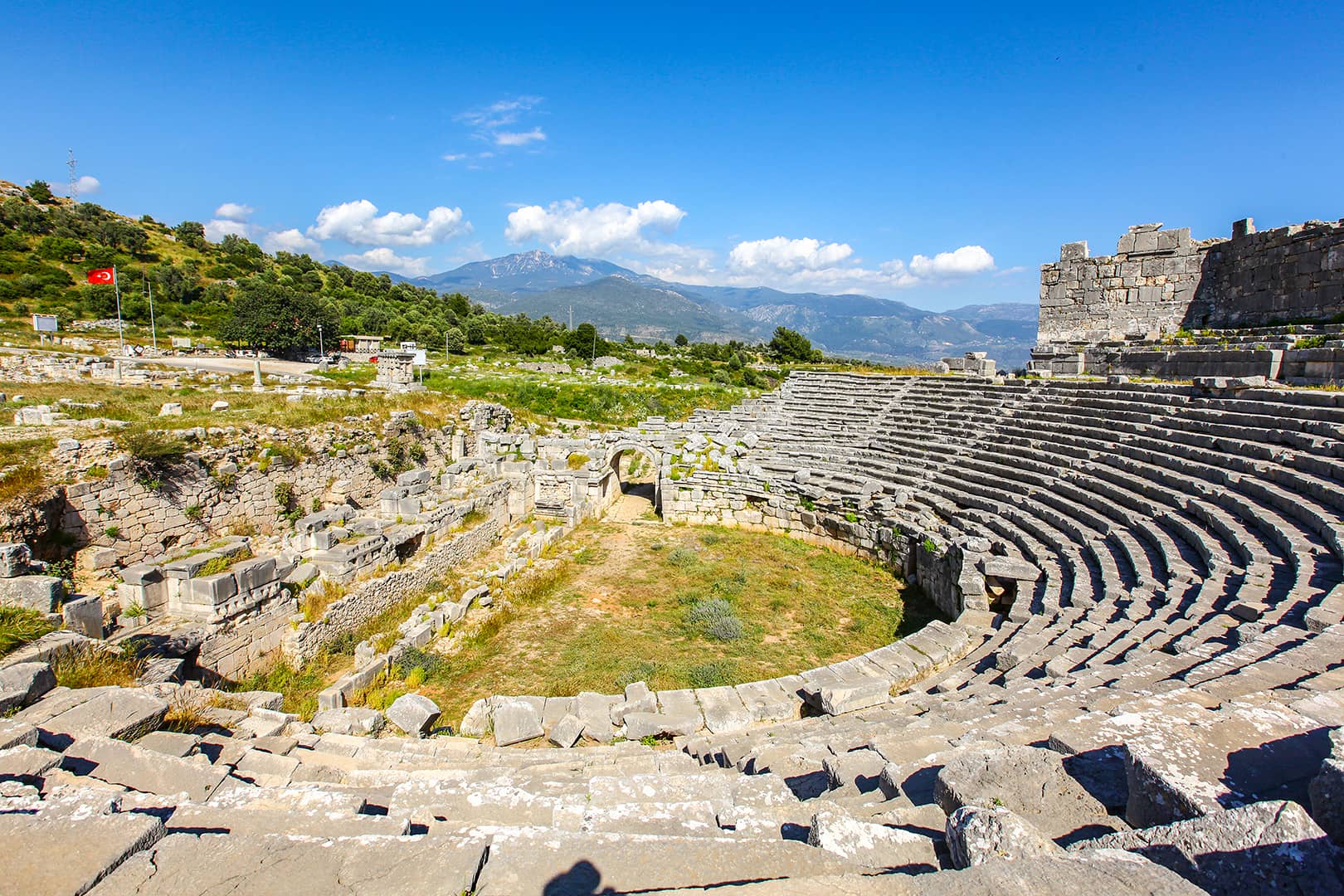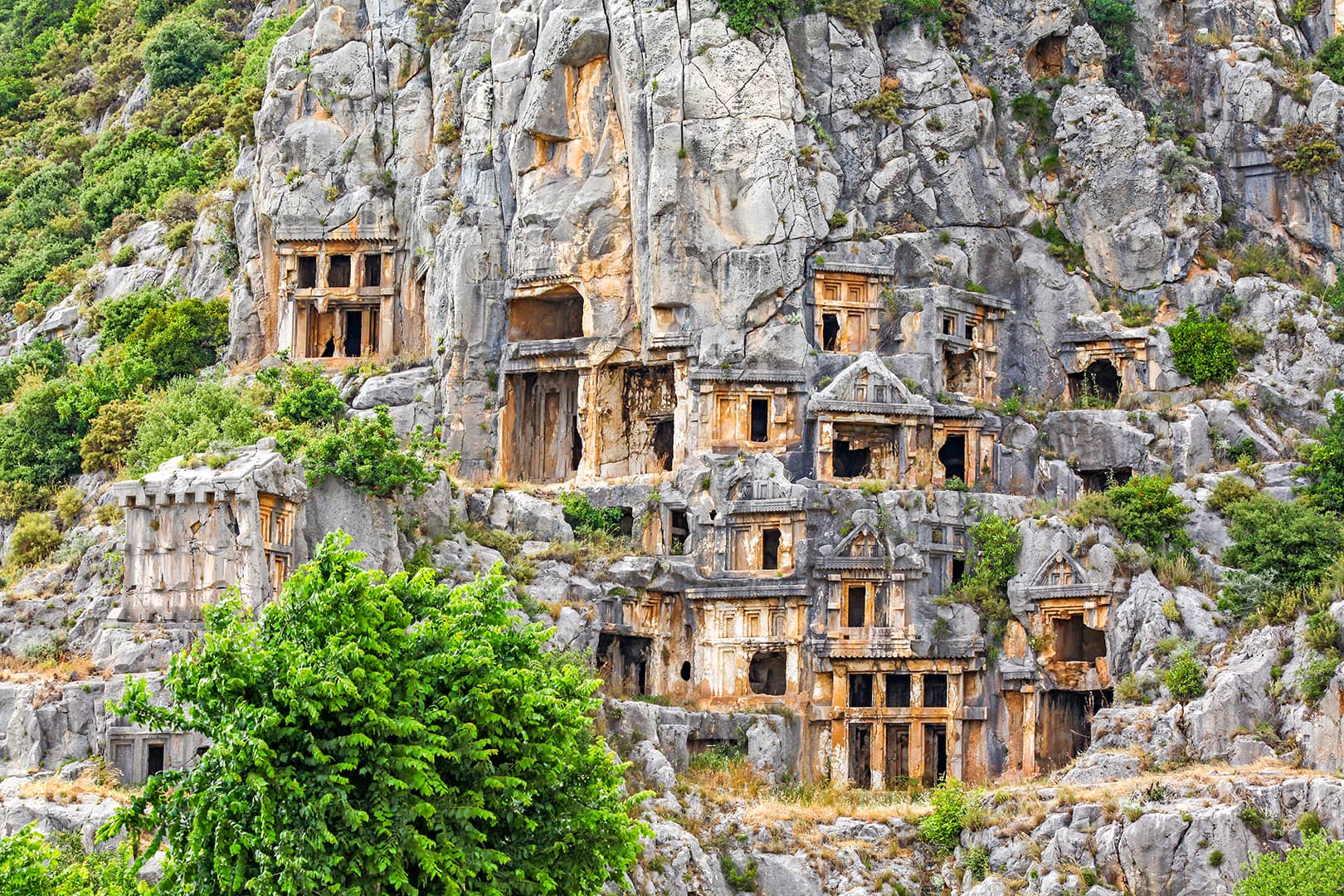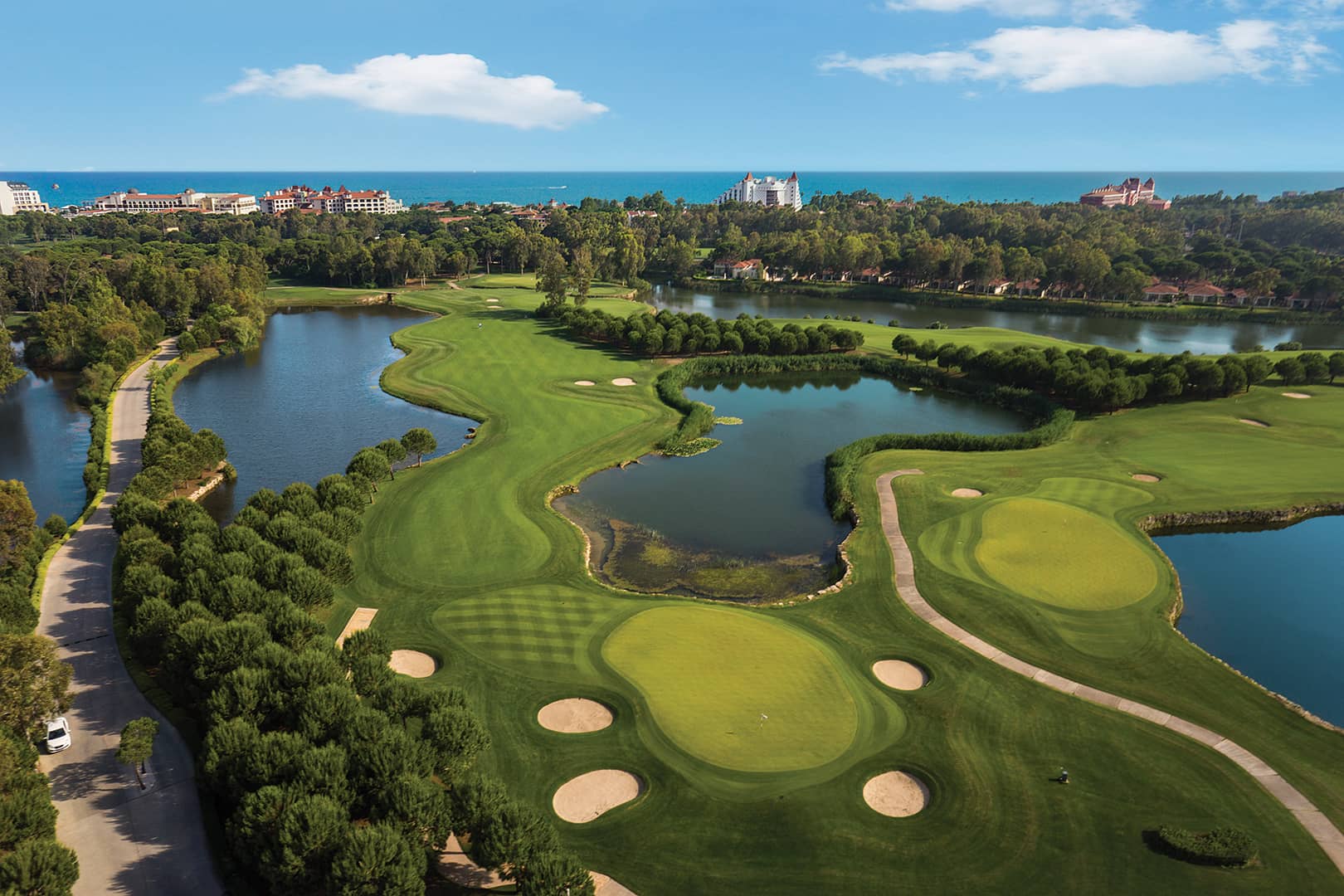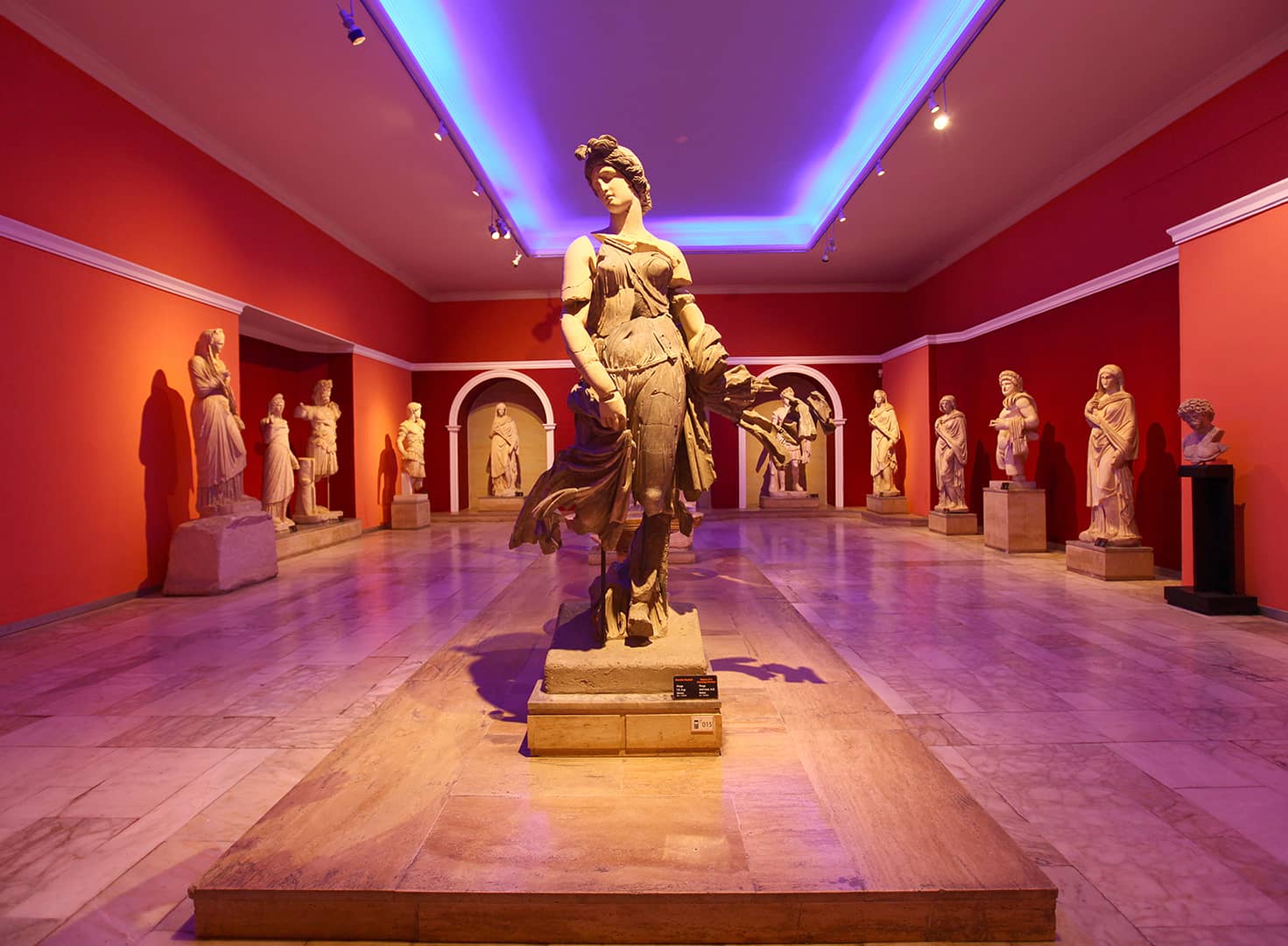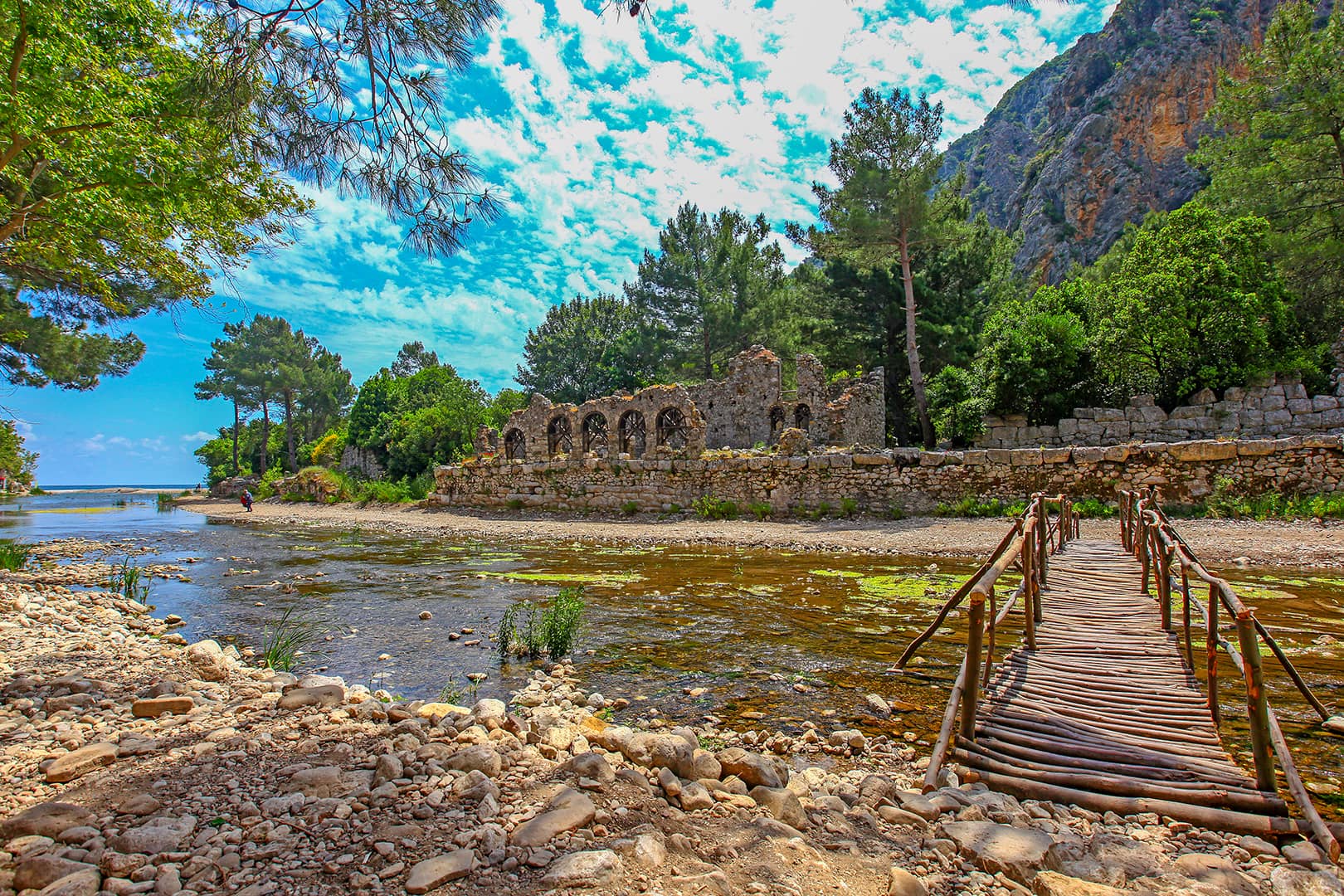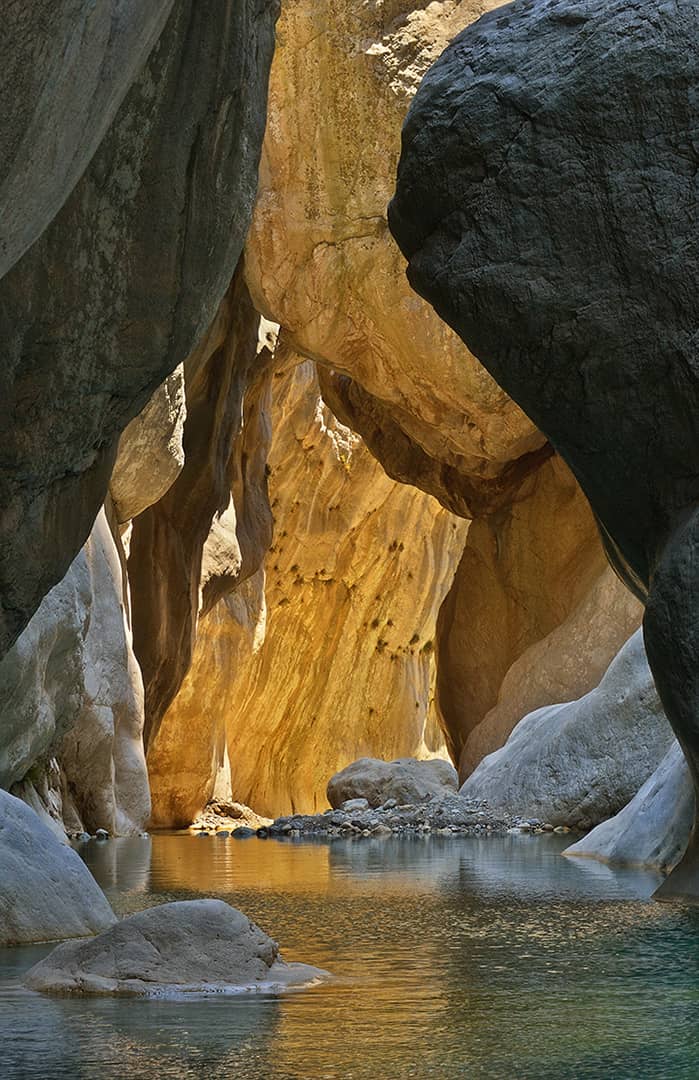

Kaleici
Kaleiçi, located in the city center of Antalya and home to boutique hotels, historical artifacts, museums, specially designed stores, stylish cafes and restaurants, is surrounded by horseshoe-shaped walls inside and out. It is known that the walls are the joint work of the Hellenistic, Roman, Byzantine, Seljuk and Ottoman periods. There are about 3000 houses with tiled roofs inside the walls. The architecture of Kaleiçi outside the walls bears the traces of Ottoman architecture. The characteristic structures of the houses not only give an idea about the architectural history of Antalya, but also reflect the lifestyle, traditions and customs of the region in the best way.
It is possible to enter Kaleiçi through Hadrian's Gate. This gate is one of the best preserved of the historical buildings in Antalya. The building, which is a Roman work, was built in 130 AD on behalf of the Roman Emperor Hadrian.
One of the most important works in Kaleiçi is the Yivli Minare Complex. The Kulliye is a collection of works of Seljuk art. The main structures in the complex are as follows: Yivli Minaret, Yivli Mosque, Gıyaseddin Keyhüsrev Madrasa, Seljuk Madrasa, Mevlevihane, Zincirkıran Tomb and Nigar Hatun Tomb. Yivli Minaret One of the first Islamic structures in Antalya. A Seljuk artifact from the eighth century.
Just south of Kaleiçi is the Historical Marina. Dozens of cruise boats are anchored at the marina, which is located in a safe bay. It is possible to make daily tours with these boats to see the cliffs and waterfalls in the vicinity.
Another important building in the region is the Karatay Madrasa. The ornate motifs on the niches and mihrabs in the madrasah are quite striking.
Among the important places and places in Kaleiçi, Karaalioğlu Park should also be mentioned. Karaalioğlu Park is established on an area of 140 thousand square meters. In the park, there are three streets parallel to each other in the east-west direction to the sea, and these streets end with three viewing terraces by the sea. Karaalioğlu Park has a rich living being, especially tree, plant, flower and bird species that reflect the flora of Antalya.
Hıdırlık Tower is a very important work in Karaalioğlu Park. The tower, which was built in the second century, is located in the southwest corner of the Kaleiçi Walls. It is 14 meters high, square at the bottom and cylindrical at the top.
Ancient Cities
Perge
Perge is located 18 km east of Antalya city centre. Aksu (Kestros) River was an element that made the geographical location of the city very valuable in ancient times. It was also the life water of agriculture in the city.
Some of the important artifacts obtained as a result of excavations in the ancient city are exhibited in the Antalya Museum.
It is a good option to start exploring Perge by walking along the monumental fortifications built by Alexander the Great.
You should not leave the Ancient City of Perge without seeing the water canal, columned street, watchtower, Roman bath, agoras, shops with double doors, a monumental theater with a capacity of 12 thousand, mosaics covering the floor and a horseshoe-shaped stadium.
Termessos
Located 30 km northwest of Antalya, Termessos is one of the best preserved ancient cities in Turkey. The city has been included in the National Park due to its natural beauties and historical monuments.
The city, which is known for the strong defense of the Termessians against the siege of Alexander the Great, is located in the section called Milyas in the Pisidia region. It is known that the city was founded by the Solyms, one of the oldest peoples of Anatolia. It is not possible to find any information about the city in the sources about the Byzantine period and after.
Phaselis
It is known that the Ancient City of Phaselis, located 18 kilometers southwest of Kemer and 58 kilometers southwest of Antalya, was founded by the Rhodesian colonists in the seventh century BC. The geographical location of the city indicates that it was an important port city. The city has three ports, one on the north of the peninsula, the other on the northeast, and the third on the southwest coast.
The fact that they welcomed Alexander the Great with a golden crown in 333 BC is one of the most important lines in the history of the city.
Phaselis, which was under Byzantine rule in the 5th and 6th centuries, was completely abandoned from the beginning of the 13th century due to the damage it received during the Seljuk siege in the 12th century. Mostly Roman and Byzantine ruins have survived to the present day. These are lined up on both sides of the main street that forms the main axis of the city and connects the north-south ports. The street widens between the agora and the theatre, forming a small square. In the southeast corner of the square, steps provide access to the theater and the acropolis. The theater is a small-sized typical Hellenistic theater.
Olympos
On the southern coast of Antalya, the second important port city after Phaselis is Olympos. It is located 85 kilometers southwest of Antalya city center and 45 kilometers southwest of Kemer district center. The city takes its name from the 2,375-meter-high Tahtalı Mountain, which is one of the western extensions of the Taurus Mountains, 16 kilometers to the north. It is within the borders of Beydağları-Olympos National Park. The exact founding date of the city is unknown.
An important visible structure of the city is the temple gate located 150 meters west of the river mouth. The most interesting among the ruins is the Sarcophagus of Captain Eudomus, which was unearthed during the excavations carried out by the Antalya Museum.
To the east of Olympos, 300 meters from the beach, there is the famous Çıralı settlement with its magnificent beach where the Caretta Carettas lay their eggs and the beach dunes where many plants live.
Myra
Located 200 km southwest of Antalya city center and 45 km southeast of Kaş, Myra Ancient City was established on the plain of the same name, within the borders of today's Demre district.
The Ancient City of Myra is especially famous for its Lycian Period rock tombs, Roman Period theater and Byzantine Period St. Nicholas Church (Santa Claus).
Since the seventh century, Myra lost its importance due to earthquakes, floods, alluviums brought by the Demre Stream, and Arab raids, and became a village in the 12th century. Today's ruins consist of the theater on the southern skirt of the acropolis and the rock tombs on both sides. According to the researches, it is possible to come across the Hellenistic city wall ruins on and around the acropolis hill, apart from the Roman Period walls, which are in a very solid condition today.
Myra, which was the capital of the state of Lycia in the fifth century AD, is located in St. Being the city where Paul and his friends stopped, the city also has a special place in the Christian world.
St. Nicholas (St. Nicholas) Church and Museum
The respected religious personality of St. Nicholas, who was born in Patara and served as a bishop in Myra in the second half of the third century AD, enabled him to reach the rank of saint after his death. St. Nicholas became the most popular saint of many countries in Europe, especially the former Tsarist of Russia.
In the northern countries of Europe, the tradition of Santa Claus, the protector and rejoicing of children, was integrated with the belief of St. Nicholas, leading to the creation of a semi-religious and very popular mythical type.
St. Nicholas Church, an important monument in Byzantine art history, became the most outstanding example of the Middle Byzantine Period with its architectural style and decoration. The fact that Myra (Demre) was the capital of the state of Lycia in the fifth century AD and the Archbishop of Myra was the second largest religious authority in Anatolia played a major role in the increase in the prestige of the city in the years after the death of St. Nicholas.
Simena
Located between Kaş and Demre districts, 195 km southwest of Antalya, ancient Simena, now known as Kaleköy, was a small Lycian coastal city. It was a strategic point that has been inhabited since the fourth century BC. The ruin that reflects this feature most vividly is the castle that has remained intact until today. It is possible to watch the most perfect views of Kekova and its surroundings from this castle.
Kekova, which gave its name to the region, is both the 7.4 kilometer long island, 500 meters from the coast, just opposite Simena, and the region that includes Simena, Teimiussa (Üçağız), Aperlai (Hot) Pier, Aquarium Bay and Gökkaya Bay. is the generic name.
The northern shores of Kekova Island, facing Simena, are full of traces of civilization that was partially submerged in earthquakes in ancient times, such as stone stairs, house ruins, pier ruins, half of which is in the water and half out of the sea, extending to a depth of 4-5 meters. Simena is located on the peninsula opposite Kekova Island. Between Kaleköy and Üçağız, among the small islets that were used as a quarry especially for sarcophagi, the remains of a submerged road and dock can be observed towards the shore.
Limyra
Limyra Antique City, located 108 km southwest of Antalya city center, within the borders of Finike district, covers the southern skirts of Toçak Mountain, the acropolis where generally early period structures are located, and the area within the Roman and Byzantine Age walls on the plain just south of it, now separated by a road.
Located in the northernmost part of the ancient city, the acropolis consists of an inner castle and a lower castle in the north. In the lower castle, there are the city walls, cisterns, Byzantine Church and Perikle Heroon. At the point where the acropolis reaches the plain, there is the theater building, which was originally from the Hellenistic period and underwent a major repair in 141.
Limyra is one of the cities with the most rock tombs in Lycia. There are more than 400 rock tombs in the ancient city, and most of them are known by name with inscriptions written in Lycian language.
in Arykan
The name of the ancient city of Arykanda, located 30 kilometers north of Finike town center and 140 kilometers southwest of Antalya city center, is Ary-ka-wanda in the Lycian language, meaning "the place next to a high rock". The fact that the name of the city reflects the native Anatolian language in terms of philology indicates that Arykanda is one of the oldest cities in the region. Based on finds other than a stone ax dated to 2,000 BC, it is difficult to date the city back to before the fifth century BC.
It is seen that in the second century BC, Arykanda minted coins as a city included in the Lycian League. The city was turned into a province with Pamphylia and connected to Rome when Emperor Claudius ended the Lycian League in 43 AD. The city, which was partially repaired after the great earthquake in 240 AD, was called Akalanda or Orykanda during the Byzantine rule.
Xanthos - Letoon
It is known that Xanthos, whose history dates back to 3000 BC, was the largest administrative center and capital of Lycia in Antiquity. Letoon, which was included in the UNESCO World Cultural Heritage List in 1988 along with Xanthos, is one of the most important religious centers of this period.
Xanthos, where Sarpedon lived, who encouraged Prince Hector with the poem he wrote during the Trojan War, is located in the east of the Muğla-Antalya provincial border separated by the Eşen Stream, within the borders of Antalya, near the town of Kınık. Letoon, on the other hand, is located within the borders of Seydikemer district of Muğla, just four to five kilometers west of Xanthos.
Xanthos and Letoon are among the important elements of the world heritage in terms of the archaeological values they contain. In these settlements, which are located very close to each other, there are stone inscriptions in which the longest and most important texts in the Lycian language can be seen.
Xanthos has the Xanthos Theater with a capacity of 2200 people. The square square surrounded by porticos on all four sides to the north of this ancient theater, which was built in the Hellenistic Period and renovated in the Roman Period, is the Roman Agora.
Discovered in 1840, the Letoon sanctuary contains a theater with thirty-six rows of seats, a basilica, inscriptions, three temples, a round portico connected to the imperial cult building, and an L-shaped stoa. Leto's divine twin children Apollo and Artemis were honored with a temple with their mother. The largest of these temples is Leto Temple, located in the west. To the east is the Temple of Apollo, built in the Doric style. In the middle of both temples, there is the Temple of Artemis, which is smaller than the others. Because the water level has risen since ancient times, the lower parts of the structures are now under water.
Patara
Patara Ancient City, located approximately 40 km west of Kaş, approximately 200 km west of Antalya city center, at the southwest end of the Xanthos Valley, is one of the most important and oldest cities of Lycia. The ancient city of Patara, which has been excavated since 1988, is of great importance in addition to its archaeological and historical values, as it is one of the rare beaches where Mediterranean turtles Caretta-Caretta have laid their eggs and hatched for millions of years.
The name of the city is even mentioned in Hittite texts of the 13th century BC. While the pottery sherds recovered from the Tepecik Acropolis contain Middle Bronze Age features, the stone ax from the pre-Iron Age, which was also unearthed on the skirts of the eastern slope of Tepecik, shows how far Patara's history goes.
Continuing its importance in the Byzantine Period, the city became an important center for Christians. Saint Nicholas, known as Santa Claus, is from Patara. Continuing its importance throughout the Middle Ages, Patara reached the present day as an important center with the arrival of the Turks.
Sillyon
Sillyon, a city of Pamphylia, is built on a flat hill with almost completely steep slopes. Serik is located 16 kilometers from the town center and 30 kilometers from the city center of Antalya. Like all other cities of Pamphylia, Sillyon is generally considered to have been founded by heroes named Mopsos and Calchas after the Trojan War. The ancient city of Sillyon, which is the city of Sillyon, also preserves its feature of being the city where the Hellenistic defense is best represented. If you want to visit Sillyon, you should be prepared for a hard climb. However, the views you will see at the end of the climb will be worth all the effort.
Aspendos
Located approximately 45 km east of Antalya city centre, Aspendos is famous for having the best preserved Roman theater not only in Anatolia but also in the entire Mediterranean world. The city was established on the hill plain near Köprüçay (ancient Eurymedon), one of the largest rivers in the region. The theater and waterways are mostly visited today in Aspendos, which owes its transportation and development to the Mediterranean Sea to the nearby river and therefore to the fertile lands around it. The remains of other buildings belonging to the city are located on the plain of the hill on which the theater leans.
The heyday of the city is undoubtedly the Roman Imperial Period, when the famous theater and waterways were built.
Aspendos Theater is one of the most distinguished representatives of Roman theater theaters today, with its architectural features and its well-preserved nature. Dedicated to the gods and emperors of the era, the building exhibits the last lines of Roman theater architecture and construction technique.
After the theater, the most important ruins of the city that can be visited are the waterways. The Aspendos waterway system is one of the best preserved examples of ancient waterways. Its general view is water pressure towers at either end of the nearly one kilometer long north-south arched bridge.
Aspendos is also one of the cities that survived the Byzantine and Seljuk periods. It is possible to see the traces of the Seljuk period repairs in the famous theater, especially in the monumental door addition in the middle of the exterior and the dark red zigzag patterned plaster coating on the façade. The most important reason why the stage building, which is thought to have been arranged as a caravanserai and where the Seljuk sultans stayed, has remained intact until today is attributed to this Seljuk repair and protectionism. Mustafa Kemal Atatürk also visited here in 1930 and gave instructions for the restoration and reuse of the city.
Side
Side, the most important port city of Pamphylia in ancient times, is located on a peninsula with a width of 350-400 meters, located 80 kilometers east of Antalya and seven kilometers southwest of Manavgat.
Side became a settlement in the seventh century BC. In the sixth century BC, it came under the rule of all Pamphylia and the Lydian Kingdom. The city, which continued to exist under the rule of Alexander the Great for a while, changed hands between the kingdoms of the Hellenistic Period after Alexander's death. The city was administered under the Pergamon Kingdom, Rome and the Eastern Roman Empire in the later periods.
Selimiye Village was founded by immigrants from Crete at the beginning of the 20th century on the ruins of the Ancient City of Side, which is known as a trade and port city. Built on a peninsula, Side, as in other Pamphylia cities, stretches along a monumental street that starts from the main gate of the city. The main street, which starts from the Great Gate in the northeast, continues along the peninsula in an almost straight line, except for the curve in front of the ancient theater, and ends with a large square near the temples. The second largest street of the city extends from the Great Gate to the south of the city. Both streets are colonnaded, with colonnaded porticos with Corinthian caps on either side and a row of shops behind them.
Alara Castle
Located 110 km east of Antalya city center and approximately 40 km northwest of Alanya; It is located on a sharp hill on the edge of the Alara Stream. It was reconstructed by the Seljuk Sultan Alaaddin Keykubat in 1232, and the Byzantine ruins in it were preserved and brought to its present appearance. The castle was built to protect the main trade route and the Alara Inn. It is thought that commercial ships came to the front of the castle at that time. The castle has inner and outer walls fortified with towers. From the edge of the Alara Stream, you can reach the second wall with a staircase carved into the rock.
Alanya Castle
Alanya Castle, which is located in Alanya town center and has been inhabited uninterruptedly throughout history due to its difficult access from the sea and land and its natural shelter, is one of the best preserved medieval castles that has survived from hundreds of castles adorning Anatolia. The castle looks like an open-air museum with its 6.5 kilometers of walls, 140 bastions, nearly 400 cisterns, and magnificent, inscribed and decorated gates.
Although the first settlement date of the castle dates back to the Hellenistic Period, the building took the form of a monumental castle with its splendor during the Seljuk Empire Period. The height of the part of the castle, called İçkale, which was established on the highest point of the western corner of the peninsula, reaches 250 meters from the sea. Since the castle is the center of administrative and military organization, it is surrounded by strong walls from four directions. Seljuk Sultan Alaeddin Keykubad also had monumental structures built to strengthen the defense of the castle.
Antalya Museum
Antalya Museum was founded in 1922 by teacher Süleyman Fikri Erten to preserve the artifacts recovered from the looting of the occupation forces that came to the region after the First World War. The museum, which was first located in Alaaddin Mosque in Kaleiçi and then in Yivli Mosque, was moved to its current building in 1972. Today, Antalya Museum consists of 14 exhibition halls, open-air galleries where sculptures and various works are exhibited, and a garden on an area of 30 thousand square meters. An important part of the three ancient cultural regions Lycia, Pamphylia and Pisidia, located within the borders of Antalya Region, one of the richest corners of Anatolian lands, which has witnessed the history of humanity uninterruptedly, constitute the area of responsibility of the Antalya Museum. Scientists from many countries conduct scientific excavations every year in Antalya, which is a unique open-air museum and an international excavation center with its archaeological riches. Many rescue excavations and landscaping works in the region are carried out by the Antalya Museum.
Antalya Museum is an archeology and history museum and can also be described as a regional museum. Most of the works in the collection were obtained from excavations in the region, and ethnographic artifacts were compiled by museum experts from the region. In the halls, artifacts that reflect the thousands of years of history of Antalya, which started with the first people and continued uninterruptedly until today, can be seen chronologically and from place to place according to their subjects. The Antalya Museum is one of the most important museums in the world, especially with its sculptures from the Roman Period in Perge and with its interesting and unique finds unearthed from museum salvage excavations in recent years. The museum was awarded the European Council Museum of the Year award in 1988.
Resort Hotels
Thanks to its unique nature and deep history, Antalya is one of the cities that hosts the most guests in the world. Guests who come to swim in the blue and turquoise sea of Antalya every year, who want to relax in its green nature, and aim to discover its thousands of years of history, stay in luxury resort hotels around the city.
Although there are luxury resort hotels all over Antalya, it is possible to say that these hotels are concentrated in certain points. Belek is one of these regions. Belek region, located to the east of Antalya city center, is home to dozens of hotels. Moreover, some of the hotels in Belek have world-class golf facilities, professional sports fields and facilities.
There are also many luxury resort hotels in Lara, which is between Belek and Antalya. In fact, the area where the hotels are located in Lara is also known as the Hotel Area in the city.
After Belek and Lara, another region where hotels are densely located is the district of Kemer. Located in the west of Antalya city center and offering unlimited alternatives to its guests with its natural and historical riches, Kemer also has luxury resort hotels. Dozens of hotel options are offered to guests both in the center of Kemer district and in towns located within the borders of Kemer, such as Göynük, Beldibi and Kiriş.
Boutique Hotels & Different Accommodation Options
Antalya offers hundreds of different luxury resort hotel options, as well as a large selection pool for boutique hotels.
In Kaleiçi in the city center, there are boutique hotel options that can be reached from historical streets and will make you stay in the most central place of Antalya.
Boutique hotel options are not limited to Kaleici only. You can find boutique accommodation options intertwined with nature in all districts of Antalya. For example, you will encounter many tree house options around the ancient city of Olympos. In the towns of Kemer district, you will see boutique hotels in farms, away from the crowd.
Places such as Maden, Tekirova, Cirali, Patara; It offers you the most ideal conditions you can find for camping. You can evaluate the option of a quiet holiday in nature, surrounded by water resources, in places meeting the sea.
To the forest
to the forest; It is a village of İbradı on the Konya-Antalya caravan route of the Seljuks, near the Ancient City of Erymna belonging to the Roman period, which has witnessed the settlement from the Hellenistic period to the present. The hidden paradise Ormana at the foot of the Taurus Mountains, which stood out as a center of knowledge and wealth in the 18th and 19th centuries, offers its visitors both the natural and cultural richness of the past.
Ormana, where history and culture are blended with nature, is one of Turkey's untouched unique corners. "Button Houses", which defy history for hundreds of years and were built only with stone and wood without the use of any mortar, are today under protection as an Intangible Cultural Heritage.
Surrounded by the majestic Taurus Mountains, Eynif Plain offers a visual feast and a unique experience with its rich flora and fauna in spring. Your journey through larch, spruce and tar trees is accompanied by running squirrels, rabbits, goats and the wild beauty of the Taurus "horse horses".
Altınbeşik Cave, Turkey's largest underground lake, is a natural wonder worth seeing with its stalactites and stalagmites. Altınbeşik National Park, where Altınbeşik Cave is located, is home to 605 kinds of plants, including endemic species, apart from wild foxes, wolves, pigs and wild goats.
You can visit the trout facilities near Üzümdere village, where agriculture and animal husbandry are developed; You can discover the morel mushroom growing in the Taurus Mountains and the herbs unique to the region, taste the famous grapes of Ormana and the molasses made from these grapes, and participate in the 50-year-old tradition grape festivals held every year in the first week of September.
When you come to Ormana, which generously offers many shades of green and blue, you can watch the postcard-like views from the viewing terrace, listen to the history and stories of the houses from the local people, and listen to the conversations of the villagers in the village cafe. At the same time, you can enjoy the peace and quiet by listening to the sounds of birds from all over the valley.
Source: GoTürkiye
